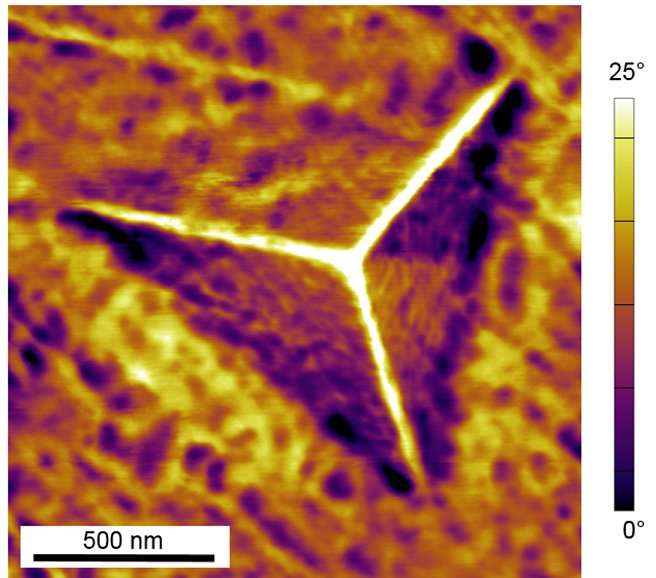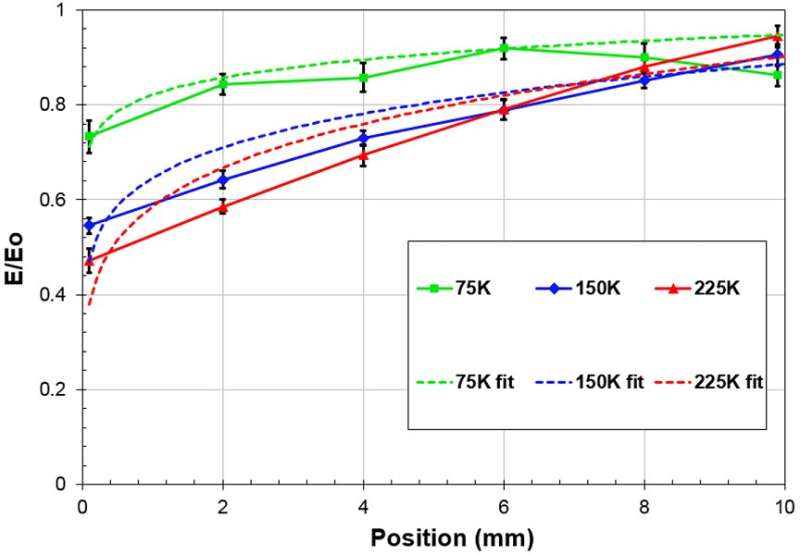Researchers point to early warning signs in military vehicle structural 'wellness'

Researchers from the U.S. Army Research Laboratory have shown that early fatigue damage behavior in structures may be predicted through the study of the microscale mechanical behavior of the material. The findings are an important result for the structural health monitoring (SHM) community and may lead to new sensing techniques for predicting the service life of critical components.
ARL researchers Daniel Cole, Ed Habtour, Tomoko Sano, Sean Fudger, and Scott Grendahl, teamed with the University of Maryland for the study, which will appear in an upcoming issue in the journal Experimental Mechanics. The work was invited to appear in a special issue of the journal focused on "Recent Advances in Nanoindentation".
The research may allow the SHM community to better understand precursors to damage in high value mechanical, aerospace, and civil systems. The team uses an analogy to the primary care doctor conducting a check-up on a patient: A doctor may be able to detect early warning signs of an illness by running a quick exam, like bloodwork or blood pressure tests. If the condition is diagnosed in time, they may be able to prevent more serious and costly treatment down the road.
Lead author Daniel Cole explained, "Many current SHM techniques are limited to detecting very late stage damage; in our doctor-patient analogy, the patient would already be in a critical state. Therefore, our group is interested in fundamental material behavior prior to damage in the conventional sense, such as a macro-scale fatigue crack."
He said that if the behavior of the material prior to damage is better understood, this could lead to vehicle structures that act as sensors themselves, with the ability to report their health state and adapt to varying conditions.
The researchers created controlled fatigue damage precursors by exposing slender cantilever beams to vibratory loads. The vibratory loading is a common design consideration in the rotorcraft community, but the effects on materials are not well understood and often result in over-designed structures as well as high maintenance costs. The researchers identified subtle variations in the dynamic behavior of the beams as the fatigue cycles increased, such as shifts in the natural frequency.
To characterize the material behavior of the early stage damage, the researchers used a technique known as Depth Sensing Indentation (DSI) or "nanoindentation", whereby a submicron probe is forced into the sample while the load and displacement are monitored. The DSI tests allowed the team to target small volumes of material in specific locations on the structure and determine variations in the micro-/nanoscale mechanical behavior at different stages of fatigue life. The DSI tests revealed that the material had become more compliant in particular areas of the structure exposed to relatively high stress. In addition, the researchers found that the material response to the DSI test may provide an indication of service life prior to crack formation.

"The structure has inherent energy from the way in which it was processed. This energy gets consumed as the structure is repeatedly loaded: through dislocation motion, slip band formation, grain reorientation, etc. The DSI tests provide insight into the remaining useful life of the structure."
The researchers acknowledge that the DSI tests are not feasible as a direct sensing method in the field, but the fundamental understanding gained from the study could help enable new SHM techniques. In particular, monitoring and analyzing the dynamic behavior of structures could provide a straightforward means for detecting early stage damage.
Coauthor Ed Habtour explained, "If we understand the linkage between the microstructural evolution and the effect on structural dynamics, we can let the structure report its health state. In some cases, the sensors to perform these measurements are onboard current Army vehicles; we may just need to analyze the data in a different way."
The team used an analytical model to relate the variation in local mechanical properties to the changing dynamics of the structure, which agreed fairly well with the experimental dynamics tests.
"We are encouraged by these results because they provide a framework for linking the materials science and structural dynamics communities, which typically are not well connected fields," said Cole.
The team said they hope that the multidisciplinary approach can attract more researchers in the SHM community to study early fatigue damage and ultimately reduce the high costs for the DoD to sustain high value mechanical and aerospace systems.
Moving forward, they said they intend to leverage the research to help enable maintenance-free, self-responsive, damage adaptive maneuver for air and ground vehicles of the future.
More information: D. P. Cole et al. Local Mechanical Behavior of Steel Exposed to Nonlinear Harmonic Oscillation, Experimental Mechanics (2017). DOI: 10.1007/s11340-017-0252-8
Provided by U.S. Army Research Laboratory





















